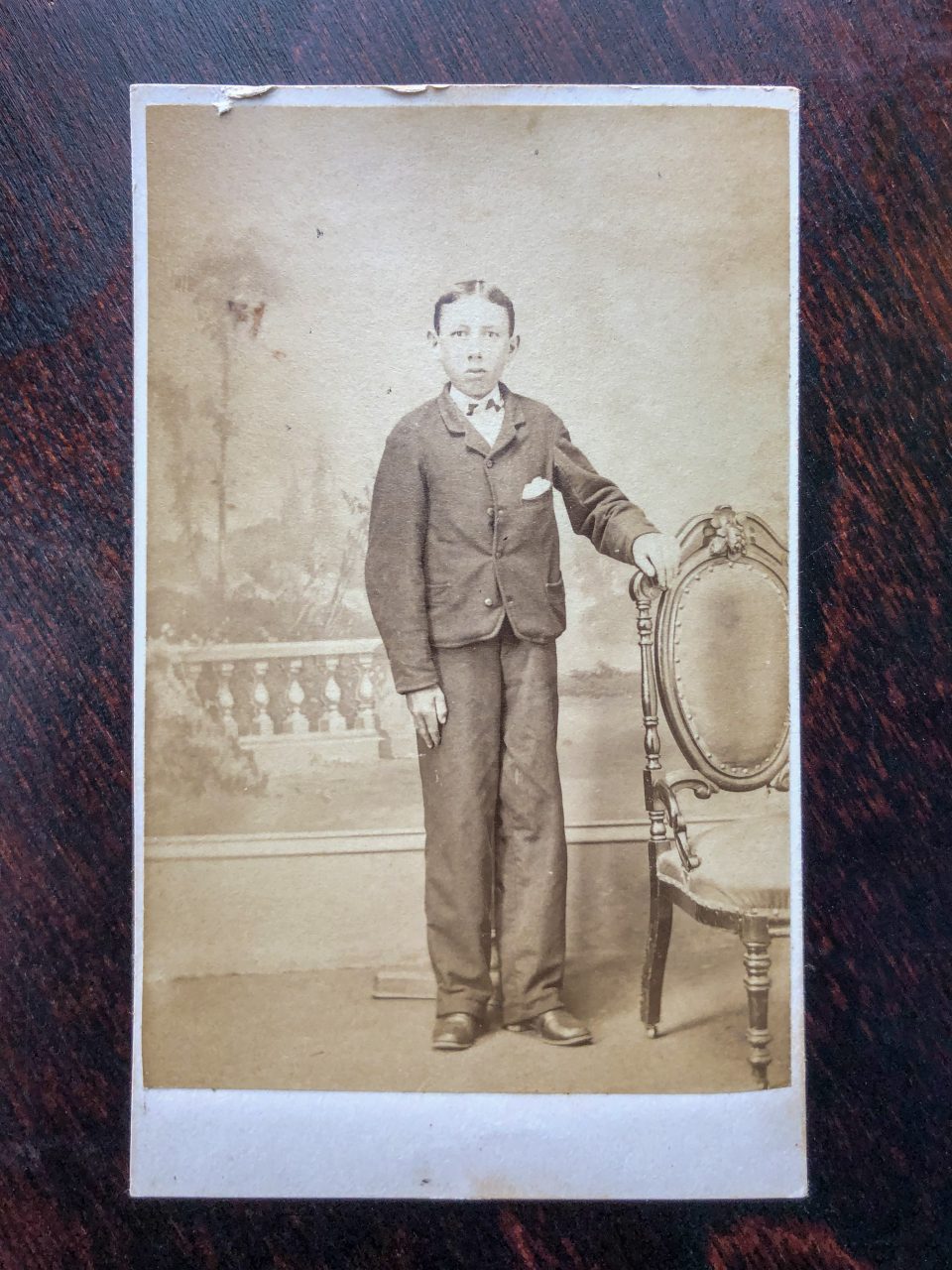The carte-de-visite portrait probably dates to the 1860s or early 1870s
Photo of a standing boy with hand on chair by Isaac S. Lachman
Below we see a carte-de-visite (CdV) portrait of a boy standing with his hand on a chair, probably 1860s or early 1870s, from the Pottstown, Pennsylvania photography studio of Isaac S. Lachman. Behind his feet we can see the base of the stand that helped him hold still for the exposure.

In his breast jacket pocket is a handkerchief, and oddly, he has left his second and fourth coat buttons unfastened.
The back of the CdV photograph shows Lachman’s imprint in red ink. His studio was located on Main Street, across from the bank. In pencil, we see the handwritten number 5623, which probably corresponded to the negative number for reprints. That’s likely Lachman’s own handwriting.

About Isaac S. Lachman
Isaac S. Lachman (April 28, 1835 – February 11, 1901) was a photographer who worked in Pottstown and Philadelphia, Pennsylvania. Of German descent, Lachman was born in Montgomery, Pennsylvania in 1835.
According to a profile on Find-a-Grave, in 1900, Isaac and his wife Sarah (Thomas) Lachman lived at 179 Evans Street in Pottstown. Also listed with them was their son, William; grandson, Earl; and niece, Rachel Kochel.
Lachman’s photo studio was advertised for a location at 208 Main Street and also at 308 Main Street in Pottstown.
On other photographs found online, Lachman also listed a studio at 984 North Second Street in Philadelphia.
His imprints sometimes name him as I.S. Lachman.
About Cartes-de-Visites
A carte-de-visite (or CdV) was a small albumen print mounted onto a piece of card stock. As the first truly affordable and easily reproduced photographic medium, CdVs were printed in the millions in the 1860s and 1870s, until the larger cabinet card style became more popular. CDVs were designed to be given to family and friends during visits.
CdVs were contact prints made from glass negatives onto albumen paper. The thin print was mounted onto a heavier card stock that usually featured the photographer’s imprint with a logo, address, and sometimes the negative number to facilitate more orders on the back. The size of a mounted CdV was typically about 2.5 inches wide × 4 inches tall, much smaller than the cabinet cards that became popular in the 1870s and through 1900.
Sources and Links
Ancestry.com. “Isaac S. Lachman“
Find-a-Grave. “Isaac S. Lachman“
Wikipedia. “Carte-de-visite“

Man, how portraiture has changed! That was probably his parent’s prized possession for many years. I have many old photos (not this old) that I saved or scanned from my mom’s collection and many of the people are unknown to me, like this young man, but somehow their story still resonates and causes one to sit back and ponder.
I always wonder about the people in the photo — what became of them? What kind of person were they? With the photographers, there’s often a little bit to learn, but the sitters are almost always anon.